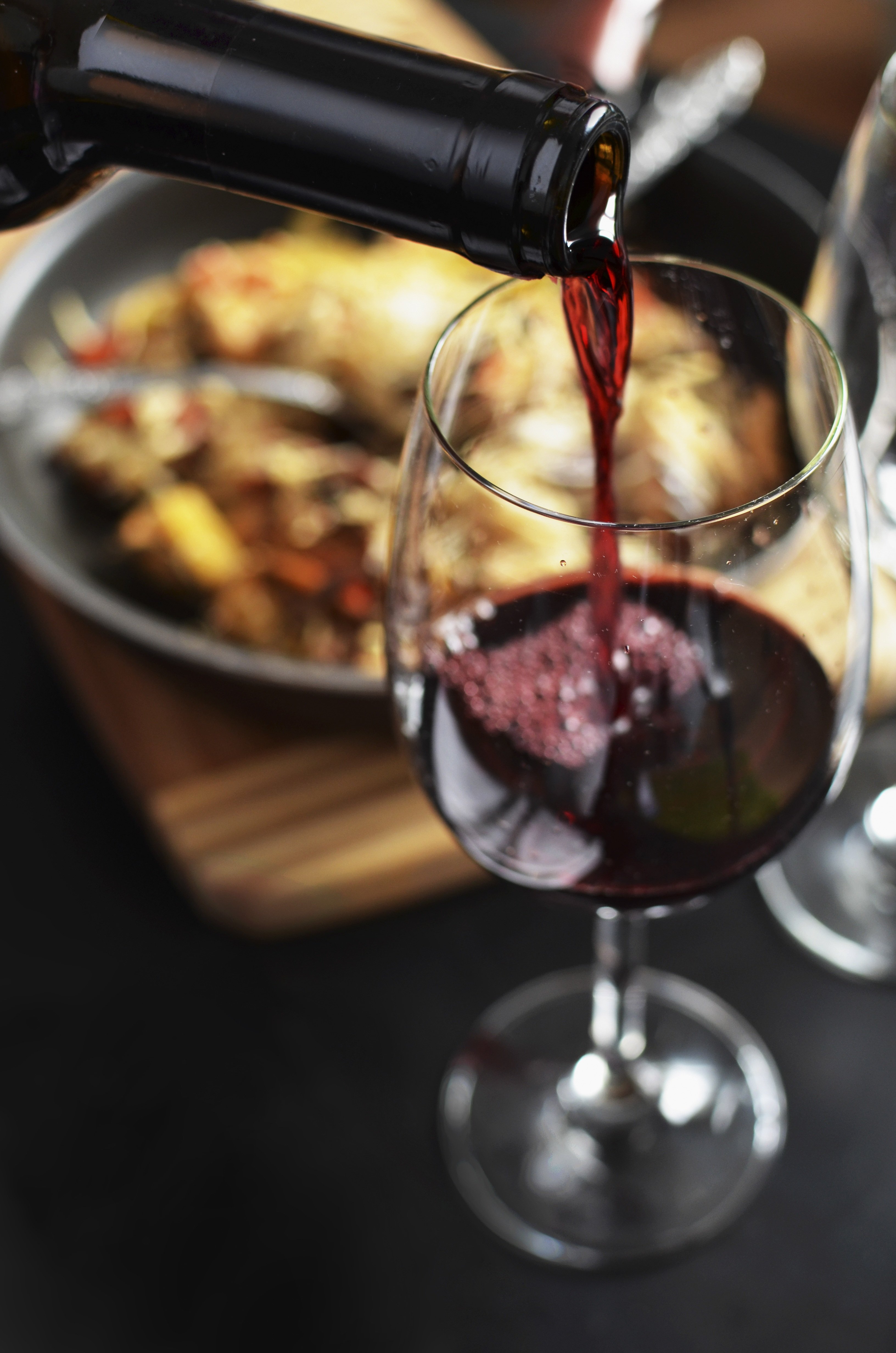How to Select the Best Wine Temperature to Store or Serve Your Favorite Bottle?
As the weather warms up, articles on wine temperature are flourishing in the media.
To name a few headlines I read recently:
- How cold should I serve a Chardonnay?
- Is putting a bottle in the freezer that bad?
- Should I buy a dual-zone wine cooler?
- Any advice on choosing a chilled red wine?
While you may have learned that you should serve white wines chilled and reds at room temperature, new wine styles are challenging this recommendation.
Let see what the science and experts say.
Best wine temperature for serving wine
Only a few scientists took interest in measuring the impact of temperature on how we perceive wine flavors and its overall quality.
I only found reports investigating the effect of heat during the winemaking process and not so much on the impact of temperature on the finished wine.
A study from Washington State University
Colleagues from Washington State University published a study looking at the “ Effect of serving temperature on the sensory attributes of red and white wines” [1].
The researchers focused on only three attributes in white wine and red wine.
- white wine attributes: aroma, sweetness, and sourness;
- red wine attributes: aroma, bitterness, and astringency.
The wine temperature selected were:
- white wine temperature: 4 -10-18 C;
- red wine temperature: 14-18-23C.
The researchers also created some mock wines by adding some tastings in a basic, neutral in flavor, wine (white or rosé). They dissolved a specific amount of these tastants to emulate the sensations they wanted to study.
A group of trained sensory panelists tasted the wines, using the best sensory practices recommended for wine tasting. The panelists were members of Washington State University and had demonstrated they had normal sensory acuity.
The researchers trained the panelists to identify the sensations they could perceive in wine and to measure the strength of these sensations.
What did the researchers find?

The effect of temperature was noticeable only when panelists smelled the wines.: the warmer the wine sample, the more intense the wine aromas.
The authors were surprised that the temperature didn’t change the sweetness or sourness of the white wines or change the bitterness and astringent feeling of the red wines.
My interpretation is that the wine quickly warms up in our mouth, and tastants, being nonvolatile compounds, are not affected by the wine temperature.
Another study found similar results when assessing the effect of temperature on six Lemberger wines from Washington state [2].
Best wine temperature for storing wine
A Study from UC Davis
In 1997, colleagues from the University of California at Davis studied the effect of storing Chardonnay wines at elevated temperatures on their aroma [3].
It is not unusual to experience high temperatures in California or any other warm climate regions. Wines exported by ship from the southern hemisphere go through a considerable variation of temperature.
The researchers compared the flavor profile of one Chardonnay wine, stored at 5C, and two other Chardonnay wines stored at 40C. One had not been made in contact with oak while the other had.
A trained sensory panel from the University evaluated the aromatic sensations of the three wines, blind.
What did they find?
Here is the researchers’ conclusion.
“Upon heating of all wines, the intensity of floral and fruity notes decreased, while aromas associated with oak and aging increased: honey, butter/vanilla, oak, tea/tobacco, and rubber.
The first 15 days of heating resulted in significant increases in the honey, rubber and tea/tobacco attributes and decreases in citrus, tropical fruit, green apple and floral aromas.
Increasing the storage time to 30 days resulted in a further decrease in fruity aromas and increase in honey, rubber, tea/tobacco, butter/vanilla, and oak.”
The effect of high temperatures seems similar to aging wine prematurely: It decreases the very volatile aromas and allows the heavier notes to reach your nose.
Wine temperature and packaging
Another group of Californian researchers looked at the combined effects of storage temperature and packaging on the perceived and analytical quality of a Cabernet Sauvignon wine [4].
The experiment consisted of storing the same wine (different bottles, of course) for six months in five different types of packaging:
- Glass bottles with natural cork,
- Glass bottles with synthetic cork,
- Glass bottles with screw cap closure,
- Two Bag-in-Box packagings.
They selected three temperatures, 10C, 20C, and 40C.
Once again, a trained sensory panel was trusted to evaluate the wines for possible sensory attributes differences among the 15 wine treatments (5 packaging x 3 temperatures).
What did they find?
The panel detected changes in aroma, flavor, taste, mouthfeel, and color attributes among the wine samples. Wine temperatures seemed to have a more significant effect than the type of packaging.
“At the highest storage temperature, all wines showed oxidized characters, independent of the wine packaging configurations, but to a varying degree. Generally, wines that received the highest oxygen amounts and storage temperatures were much lighter, less red, and more brown-yellow at the end of the 6-month storage period than their counterparts stored at 10°C.“
What is the best wine temperature?
The best wine temperature should allow you to perceive and appreciate wine aromatics, by smelling the glass, or the overall flavor in the mouth; therefore, it should not be too cold.
Serving at room temperature may suppress the very volatile compounds, the sommeliers call “the bouquet,” especially in the white wines.
Storing wines at high temperatures is a big NO-NO. A cooler temperature will enable slower aging of the wine.
While I don’t have empirical data to share, the conventional wisdom is that a dry locale, with minimum temperature variation over the year, should be sufficient to preserve your bottles nicely. The place should not be too dry as the corks may dry up, and wines will start leaking off the bottle. It should not be too damp, as mold will happily grow in the environment, get into the corks, and then the wine.
Other topics related to wine temperature
Chilled reds?
Hot summers call for refreshing beverages, and drinking wine is not refreshing. The alcohol tends to warm up our mouths rather than cooling them. Low alcohol wines, such as Rosé or Moscato wines served chilled, are pleasant and quite refreshing during hot weather.

What about Reds?
Should we forego red wines during the summer months? Wine specialists indeed recommend serving red wine at room temperature. Above 22C, I find the experience quite dull.
It is not surprising that one-third of British red wine drinkers stated they never chilled red wine; it was sacrilege! [5, 6]
The first time I drank a chilled red wine was in Alsace; it was a Pinot noir. The wine was light and fruity. Gamay wines of Beaujolais are enjoyable when served chilled.
Why not experimenting?
Rapid chill in the freezer?
I have chilled wine in the freezer once in a while; often, my excuse is that I am in a hurry, or I forgot to chill my favorite bubbly.
However, I do not recommend leaving the bottle for more than 30 minutes at -19C. I saw once a bottle of sparkling wine turned into a big ice cube, and we had to let it thaw for a couple of days in the fridge.
I love reading your comments and suggestions
Submit them
using this link
Published June 25 2017
Updated July 1st, 2020
References
[1] Ross, C. F. and Weller, K. (2008), Effect of serving temperature on the sensory attributes of red and white wines. Journal of Sensory Studies, 23: 398–416.
[2] Ross, C. F., Weller, K. M. and Alldredge, J. R. (2012), Impact of Serving Temperature on Sensory Properties of Red Wine as Evaluated Using Projective Mapping by a Trained Panel. Journal of Sensory Studies, 27: 463–470.
[3]: C. De La Presa-Owens, A. C. Noble, Effect of storage at elevated temperatures on aroma of Chardonnay wines. American Journal Enology & Viticulture January 1997 48: 310-316
[4]: H. Hopfer, P. A. Buffon, S. E. Ebeler, and H. Heymann. Combined effects of storage temperature and packaging on the sensory, chemical, and physical properties of a Cabernet Sauvignon wine. Journal of Agricultural and Food Chemistry 2013 61 (13), 3320-3334
[5] Hancock, E. (June 2019) ONE THIRD OF DRINKERS DON’T KNOW YOU CAN CHILL RED WINE
[6] Waters C. (June 2020) Any advice on choosing a chilled red wine as I try to keep cool this summer?



